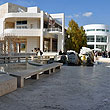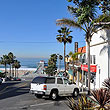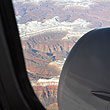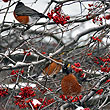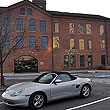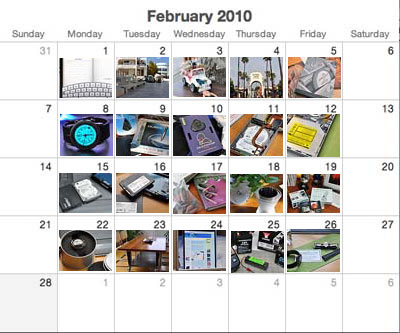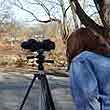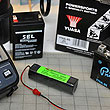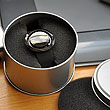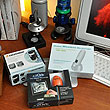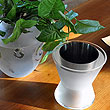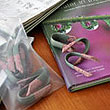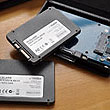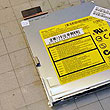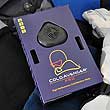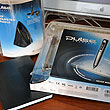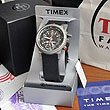The beautiful weather of the past few days gave us just the excuse we needed to go outside and play with the 3D Nikon rig. We got a few sets of stereo images of folks enjoying the day at the Arnold Arboretum.
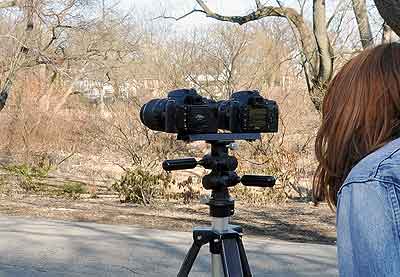
Setting up was easy, and getting the zoom factor to match was not difficult. However, matching the exposure of the two cameras was harder than expected. We didn't think it would be so, but the difference might have been because of the VR vs non-VR 18-55mm lenses on the cameras.
At F22, the camera with the VR lens (left) took the shot at 1/30 sec, but the non-VR lens (right) required 1/15 sec.
The sharpness was similar enough, but some color differences were clearly visible.
Fortunately, biological systems (i.e., us) have evolved a high tolerance for mismatched contrast when it comes to achieving fusion of stereo images. 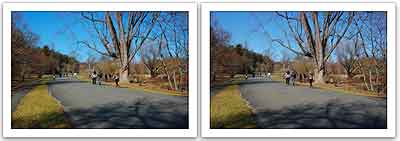
Now that we have some stereo images to play with, we are going to experiment with some techniques for seeing the 3D effect. Presenting a separate image to each eye can be difficult, especially without the aid of specialized glasses/viewer. The brain will try to merge the two images, but only if certain conditions are met.
One of our goals is to achieve 3D effect just by looking at them on the computer screen
without the use of a viewer.
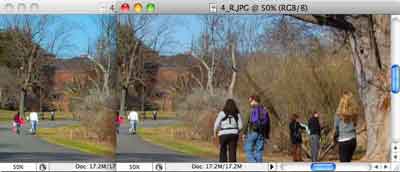
One way to do that is to use the same technique for seeing those "magic eye" images that were popular back in the late 90s.
There are many sites on the web devoted to those images. Most of them have a blurb describing how to "see" the 3D effect.
The biological computation basis for the technique was well described by Marr and Poggio back in the mid to late 70s.
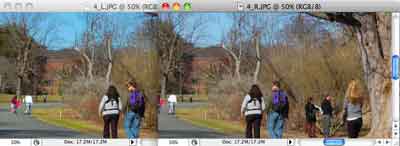
Our approach is this:
- Open the Left/Right pair in an image editor such as Photoshop
- Align the Left/Right pairs so they overlap on the left or right
- Use the "magic eye" technique to merge the small section
- Once a section has "merged", slowly shift the overlap to expose more of the image.
- If done slowly, large sections of the image will merge, creating a span of 3D space in which the viewer can "explore."

Some of our interns were not able to make the images merge no matter how long they stared at the screen. Fortunately, there are other ways to aid the brain in seeing the 3D effect.
One such method is with the use of a stereoscope viewer. It is "old-school" but a well-tested. We will even try making one based on a unit we picked up many years ago. 
We acquired this viewer many years ago during a visit to the MIT Tech Museum.
It is made out of cardboard and should be perfect for our purposes. We will print out some of the images and see how we can get the 3D effect using this simple unit.
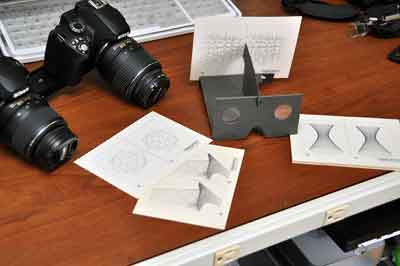 Once we get it working, our next project will be to make a viewer out of something stronger...maybe aluminum or lucite? We will also take our rig around Boston, acquire more color stereograms, and see the world in 3D. OK...we can do that already, but you know what we meant :-) [Permalink] -Stereogram FirstLook Once we get it working, our next project will be to make a viewer out of something stronger...maybe aluminum or lucite? We will also take our rig around Boston, acquire more color stereograms, and see the world in 3D. OK...we can do that already, but you know what we meant :-) [Permalink] -Stereogram FirstLook
|


